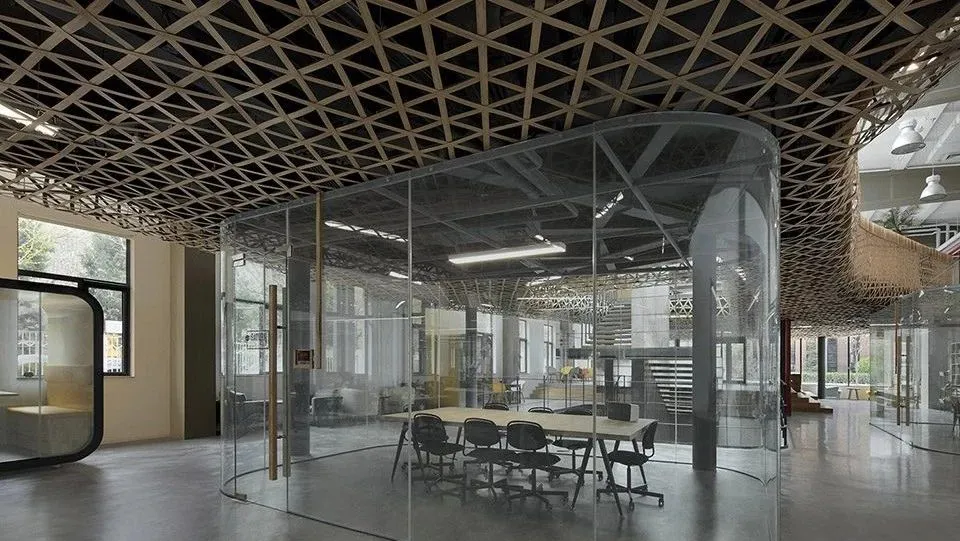
建筑设计︱马蜂窝旅游网全球总部(二期)
马蜂窝旅游网全球总部二期,位于北京朝阳区的一个工业园区,建筑面积为2559.31平方米。设计团队通过空间改造和创意使用了“云”概念,实现了300人的办公和社交需求,同时保持了自由的理念。设计采用了竹元素和钢结构,增强了空间的自然感和流动感。
- 项目名称:马蜂窝旅游网全球总部二期空间设计
- 建筑面积:2559.31平方米
- 设计公司:袈蓝建筑设计事务所
- 主持建筑师:邹迎晞
- 项目地点:北京朝阳区酒仙桥北路9号恒通国际创新园C15栋
- 设计时间:2017年6月
- 建成时间:2018年2月
- 项目类型:室内设计与改造
- 材料:竹板、TOTO卫浴、SONOS声音系统,Open Make办公家具
2018年08月30日 17:30
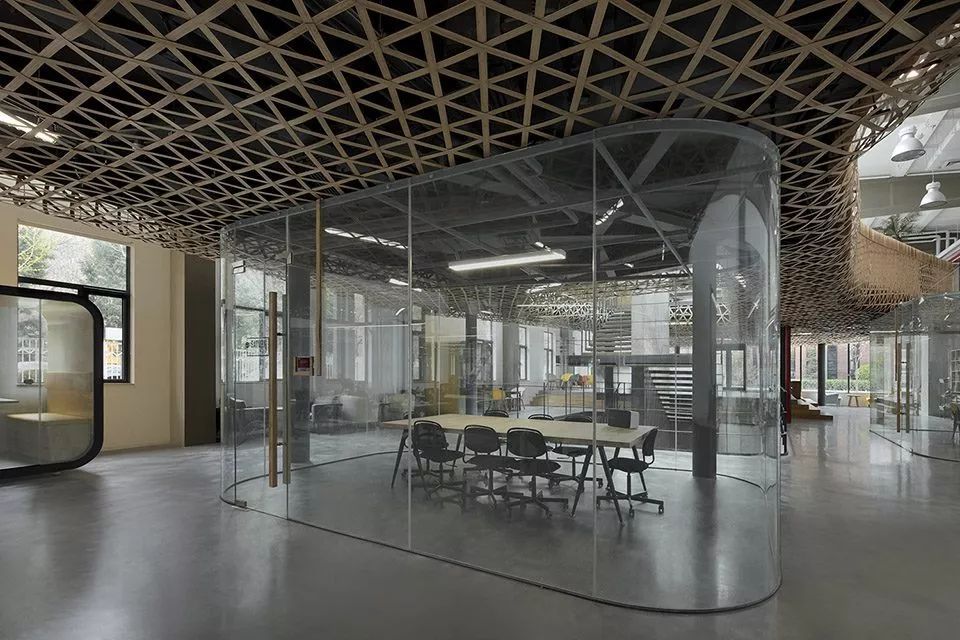
媒体发布选集
Media release selection
archdaily
https://www.archdaily.com/896458/mafengwo-global-headquarters-phase-ii-syn-architects
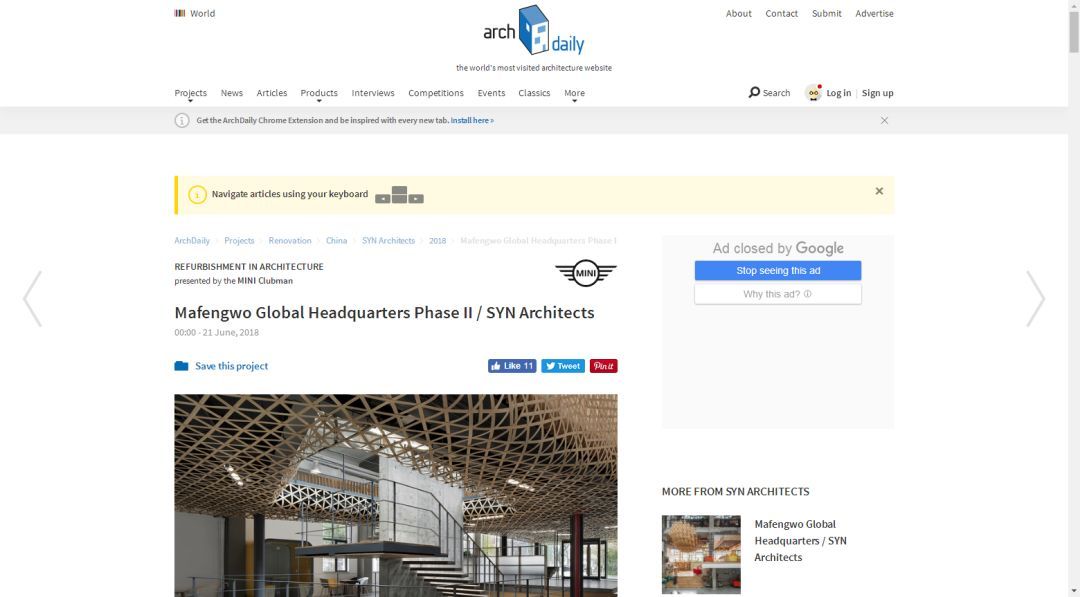
follownews
https://www.follownews.com/mafengwo-global-headquarters-phase-ii--syn-architects-4l5nl
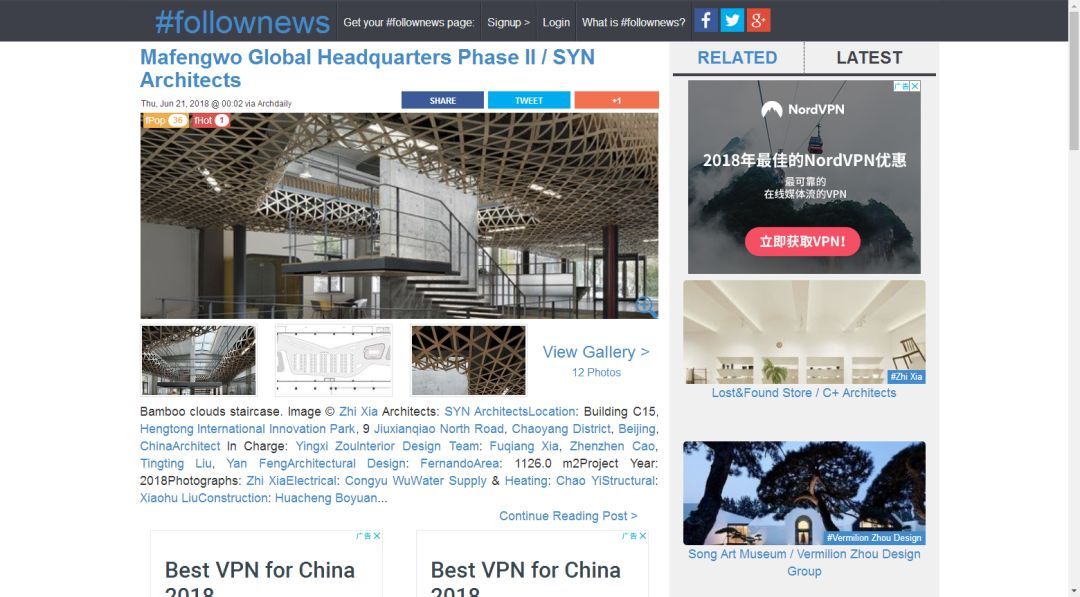
G&G_Magazine
https://issuu.com/casaliving_it/docs/july_edition_g_g___magazine
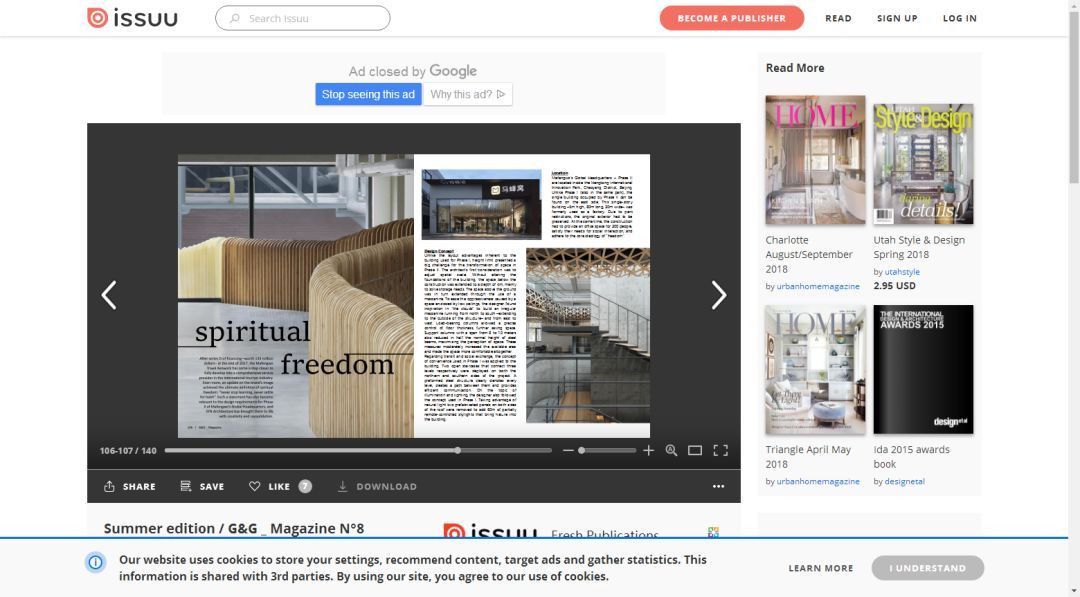
archello
https://archello.com/project/mafengwo-global-headquarters-phase-ii
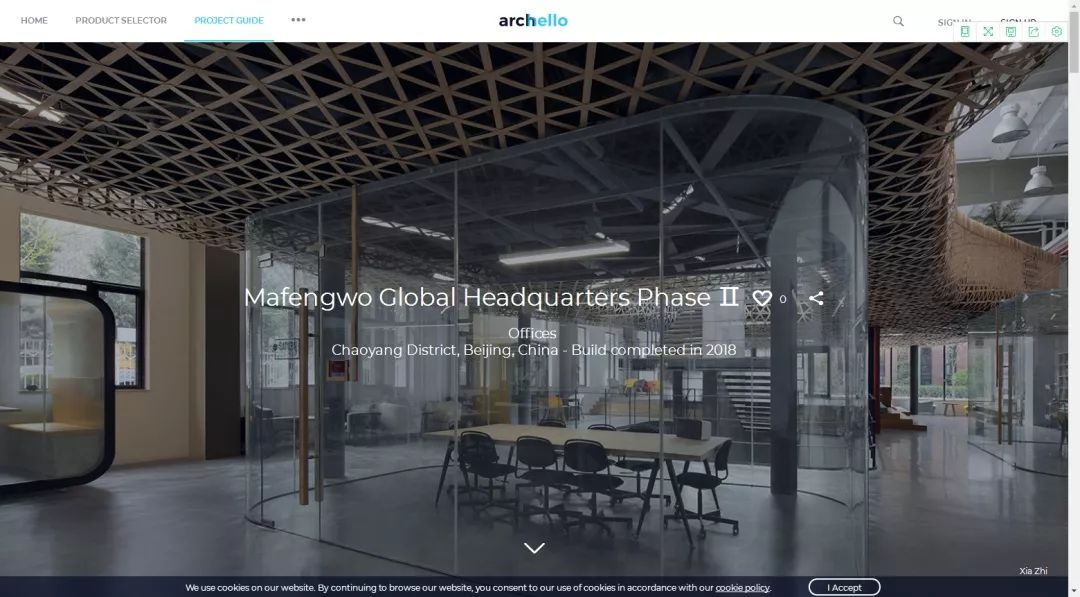
有方
http://www.archiposition.com/items/20180620111203
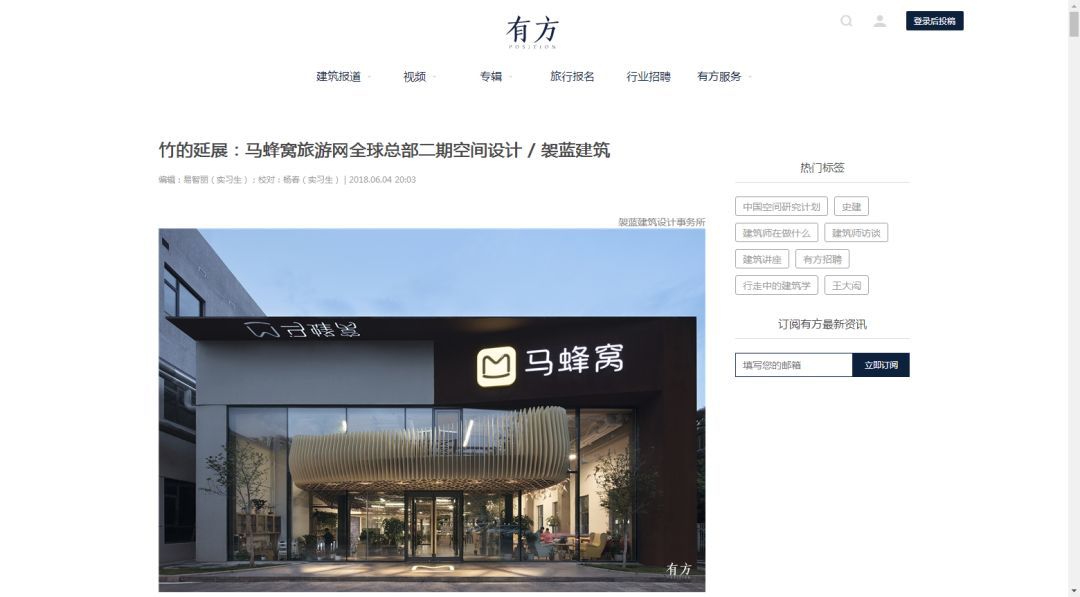
gooood
https://www.gooood.cn/mafengwo-travel-network-global-headquarters-phase-ii-design-beijing-china-by-syn-architects.htm
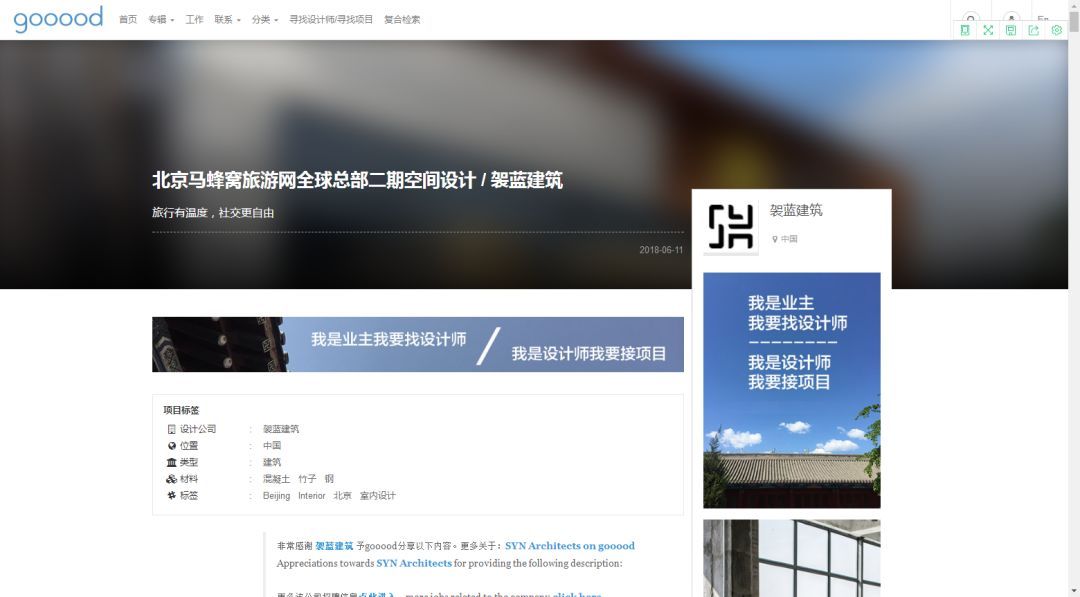

设计介绍
Project information
伴随2017年底1.33亿美元D轮融资的完成,马蜂窝旅游网向全维度旅游需求服务商再次迈进了一步。随后,更以品牌名用字的变更做出了对于自由精神的最新诠释–“不与认知作对,不与习惯做对”。这些新的变化也成为了业主对于马蜂窝旅游网总部二期办公空间(以下简称“马蜂窝二期项目”)设计要求的一个部分,由袈蓝建筑的团队在空间改造的创意与落地中呈现。
After series D of financing –worth 133 million dollars– at the end of 2017, the Mafengwo Travel Network has come a step closer to fully develop into a comprehensive service provider in the international tourism industry. Even more, an update on the brand’s image achieved the ultimate definition of spiritual freedom: “never stop learning, never settle for habit”. Such a statement has also become relevant to the design requirements for Phase II of Mafengwo’s Global Headquarters, and SYN Architecture has brought them to life with creativity and consolidation.
▼建筑外貌,exterior view
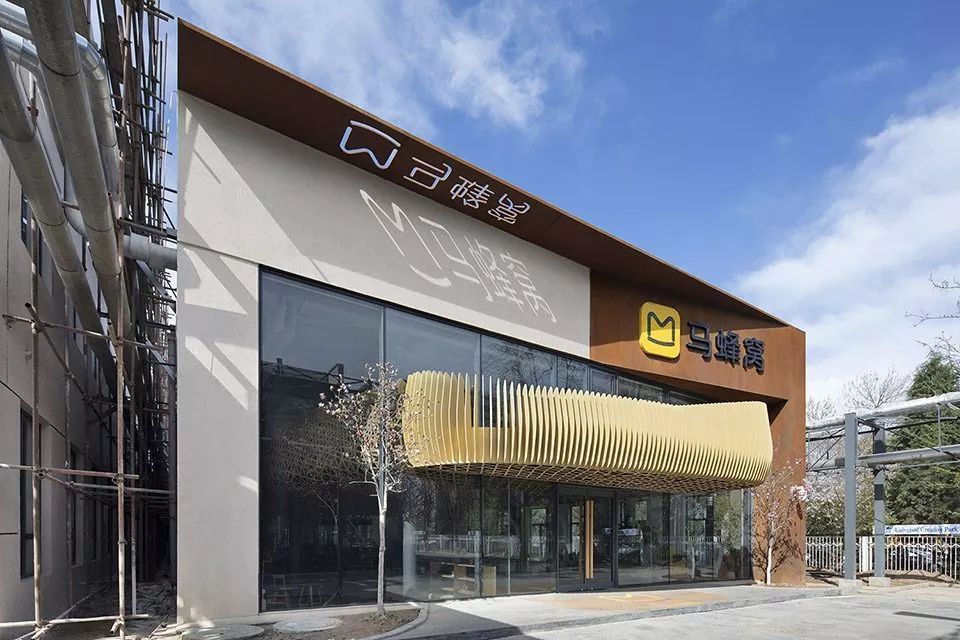
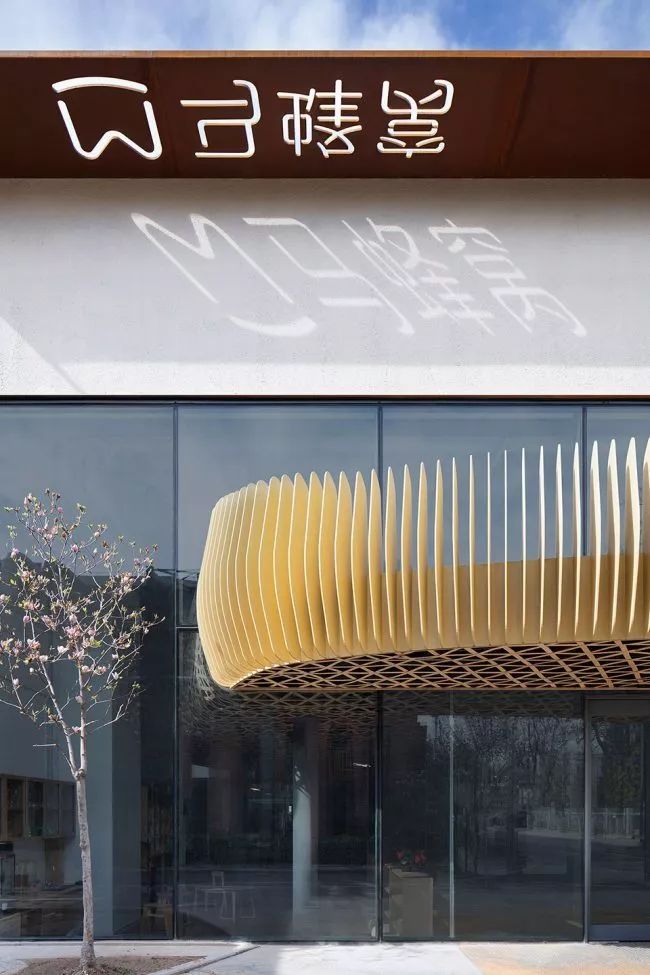
项目位置
马蜂窝二期项目位于北京市朝阳区恒通国际创新园内。与一期(在同一园区内)的前身建筑不同,二期的前身是一座位于园区东侧的独栋厂房,平层,挑高5米,纵深80米,面宽20米。由于园区对于原有建筑外观变化的限制,在这样的一个空间内,要实现300人的办公、社交需求,同时仍然秉承“自由”的内核,对于规划设计,无疑又是一次挑战。
Mafengwo’s Global Headquarters – Phase II are located inside the Hengtong International Innovation Park, Chaoyang District, Beijing. Unlike Phase I (also in the same park), the single building occupied by Phase II can be found on the east side. This single-story building –5m high, 80m long, 20m wide– was formerly used as a factory. Due to park restrictions, the original exterior had to be preserved. At the same time, the construction had to provide an office space for 300 people, satisfy their needs for social interaction, and adhere to the core ideology of “freedom”.
设计构思
相对于一期的原有建筑格局优势,挑高限制是马蜂窝二期空间改造中需要面对的最大挑战。建筑师首先考虑的就是调整空间尺度。在不触及建筑基础的前提下,先将空间向下延展4米深度,集中解决仓储需要。而地面以上部分则通过夹层置入扩大功能表现空间。为了缓解低挑高带来的压抑感,设计师以“云”为创意,做了一片南北铺满并延伸至室外,东西则保持通透的不规则悬浮夹层。通过承重柱解决支撑的同时,针对楼板厚度又进行了极限压缩。在保持支撑立柱8-10米跨度的前提下,将钢梁高度压缩到常规情况的一半,从而最大程度地释放出层高。在适度增加使用面积的同时,兼顾了对于舒适度的关照。
Unlike the layout advantages inherent to the building used for Phase I, height limit presented a big challenge for the transformation of space in Phase II. The architect’s first consideration was to adjust spatial scale. Without altering the foundations of the building, the space below the construction was extended to a depth of 4m, mainly to solve storage needs. The space above the ground was in turn extended through the use of a mezzanine. To ease the oppressiveness caused by a space enclosed by low ceilings, the designer found inspiration in “the clouds” to build an irregular mezzanine running from north to south –extending to the outside of the structure– and from east to west. Load-bearing columns allowed a precise control of floor thickness, further saving space. Support columns with a span from 8 to 10 meters also reduced in half the normal height of steel beams, maximizing the perception of space. These measures moderately increased the available area and made the space more comfortable altogether.
▼建筑内景,interior view
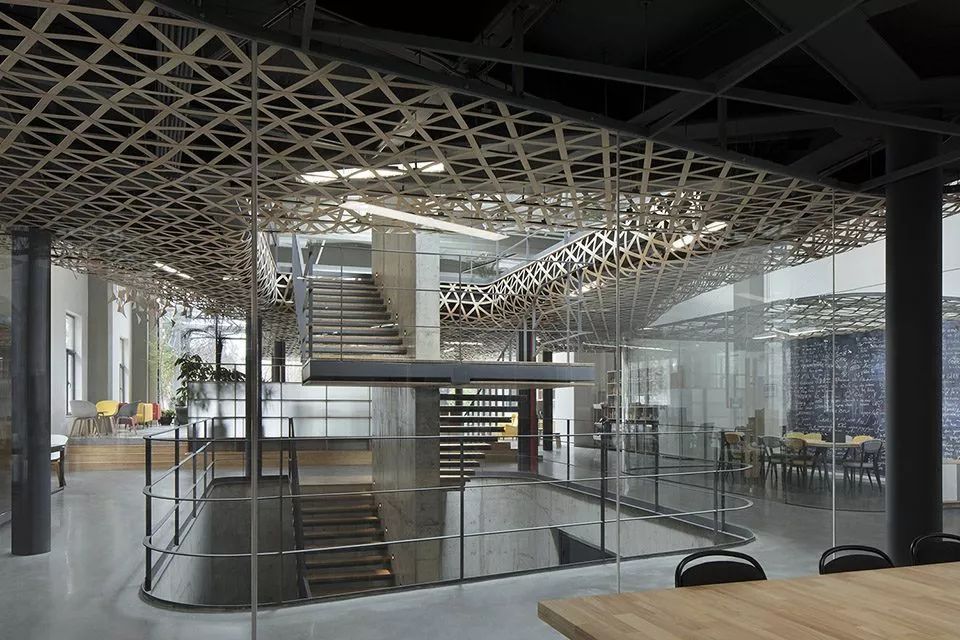
在交通动线上,依旧延续便捷到达的理念,在南北分别设置了两处贯通三层的开放楼梯,采用钢结构预埋的方式处理,形成不同楼层、分区之间的自由穿梭和高效交流。对于光线处理也同样延续了一期充分利用自然光线的理念,拆除了建筑顶部屋面屋脊两侧原有的预制板,增加了通长60米可以部分遥控开启的天窗让空间与自然发生更多关联。
Regarding transit and social exchange, the concept of convenience used in Phase I was applied to the building. Two open staircases that connect three levels respectively were deployed on both the northern and southern sides of the project. A preformed steel structure clearly denotes every level, creates a path between them and provides efficient communication. On the topic of illumination and lighting, the designer also followed the concept used in Phase I. Taking advantage of natural light two prefabricated panels on both sides of the roof were removed to add 60m of partially remote-controlled skylights that bring nature into the building.
▼贯通三层的开放楼梯,open staircases that connect three levels respectively were deployed
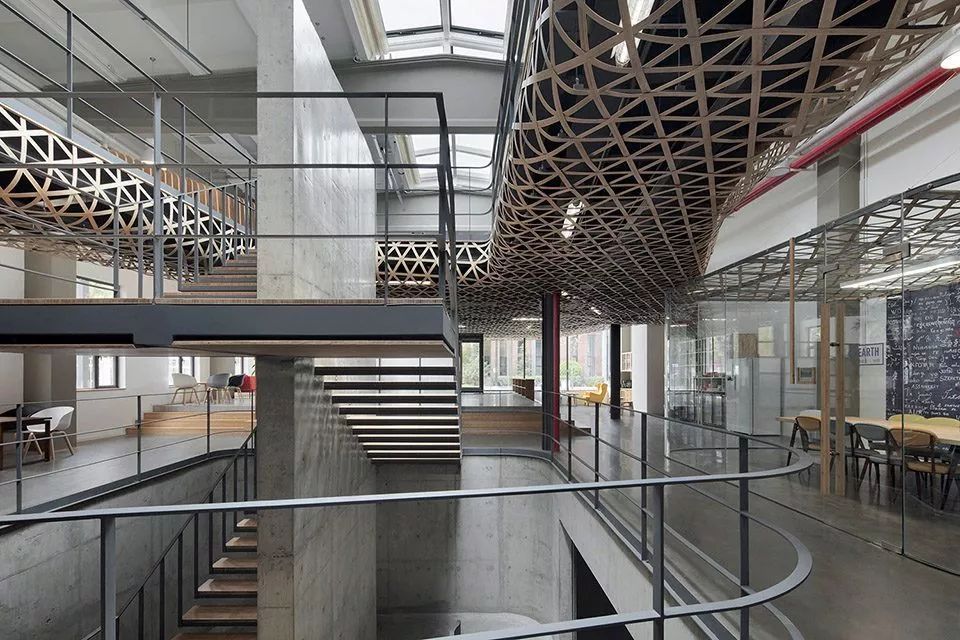
▼拆除了建筑顶部屋面屋脊两侧原有的预制板,增加了通长60米可以部分遥控开启的天窗,taking advantage of natural light two prefabricated panels on both sides of the roof were removed to add 60m of partially remote-controlled skylights
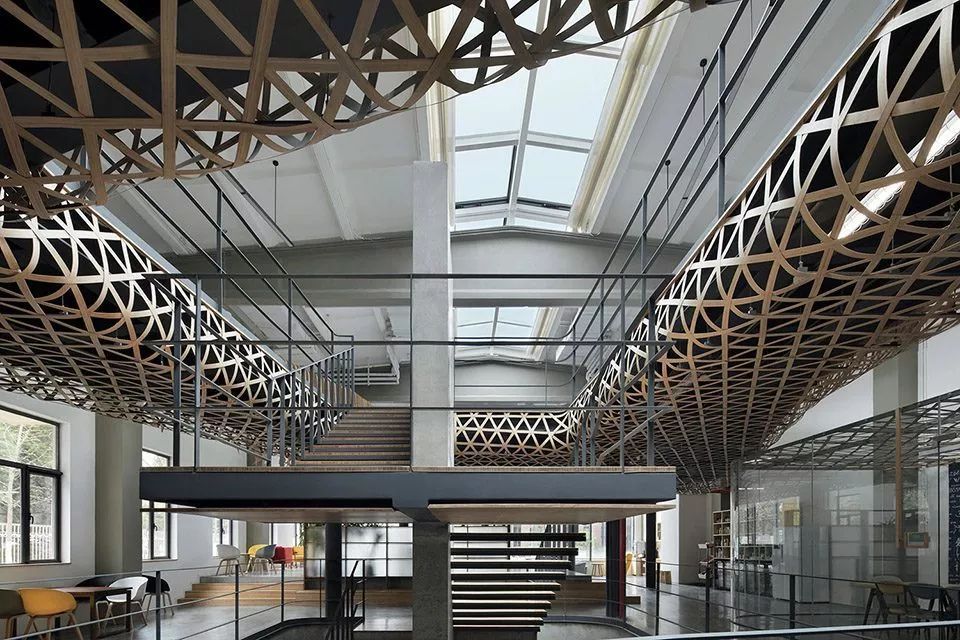
材质与装置艺术
基于建筑原有的文化基底,设计师保留了建筑内带有浓郁工业风格的钢架筋骨、水泥地面,并以铁艺处理了门头外观。但是在内容上选择了更具人文内涵和自然质感的“竹”材质做辅助,调整空间的温度的同时,呼应“云”概念的灵动与轻盈,将装置设计和功能设计融为一体。
To preserve the cultural foundations of the building, the designer retained steel frames, concrete floors, and iron elements on doors, granting the space with a strong industrial atmosphere. For the interior, however, more humanistic and natural motifs were selected based on “bamboo” materials, adjusting the temperature of the space, and matching the vividness and lightness brought in by the concept of “clouds”, in a well-balanced integration between equipment and functional design.
▼保留了建筑内带有浓郁工业风格的钢架筋骨、水泥地面,the designer retained steel frames, concrete floors to preserve the cultural foundations of the building
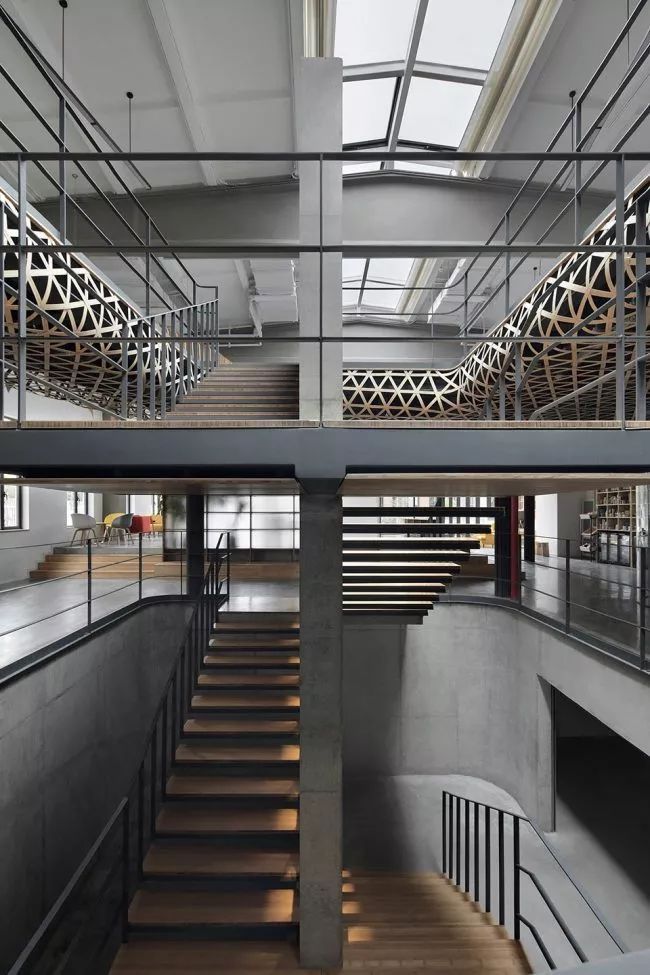
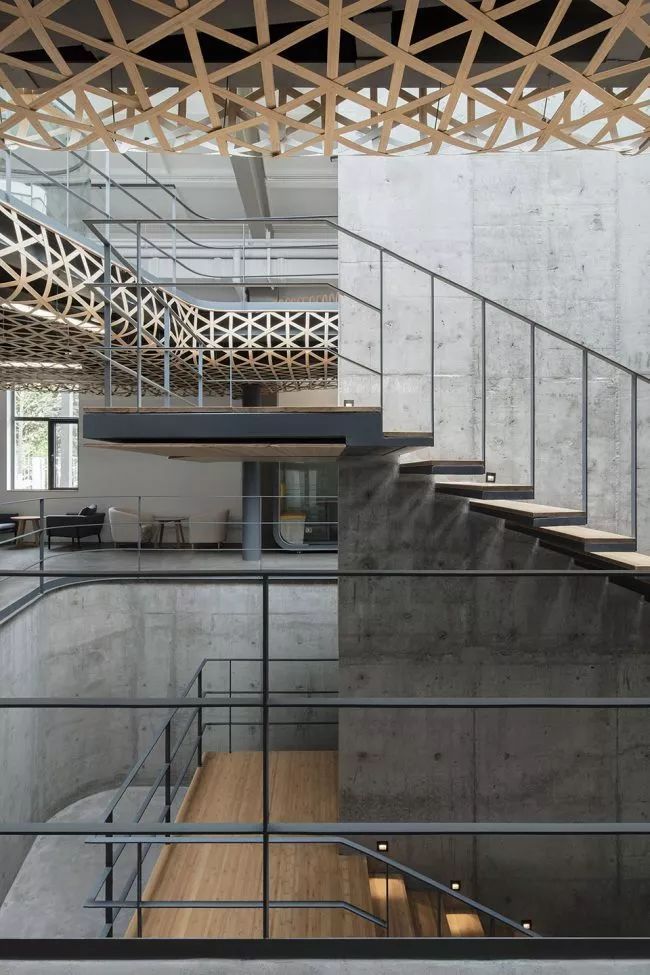
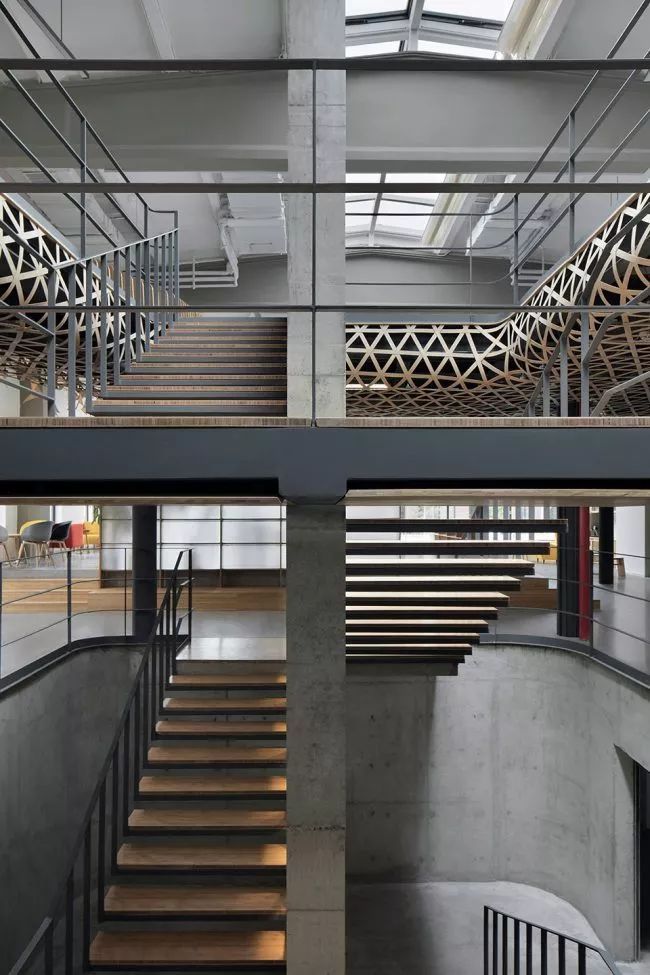
▼在内容上选择了更具人文内涵和自然质感的“竹”材质做辅助,more humanistic and natural motifs were selected based on “bamboo” materials, adjusting the temperature of the space
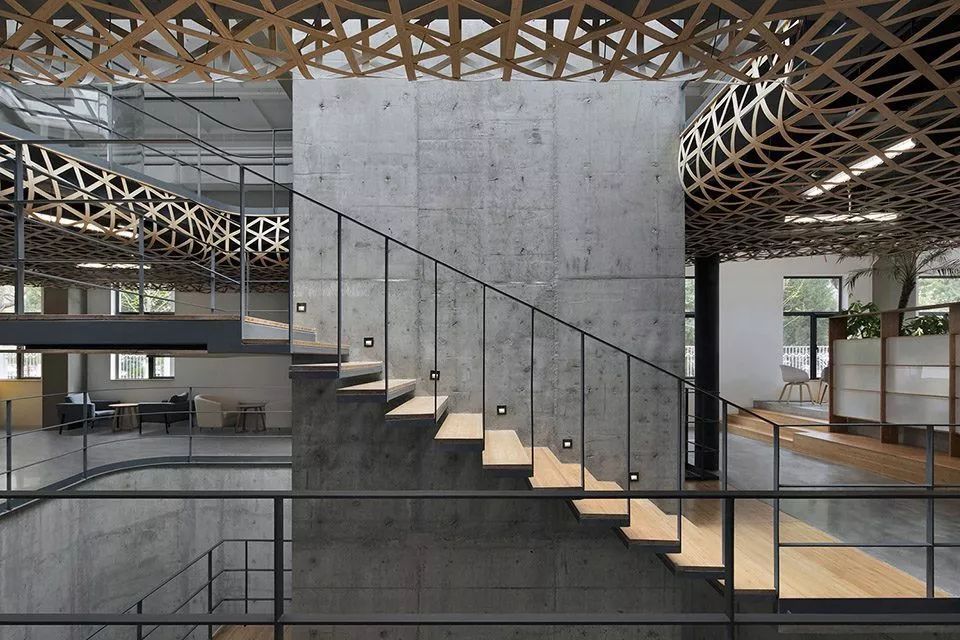
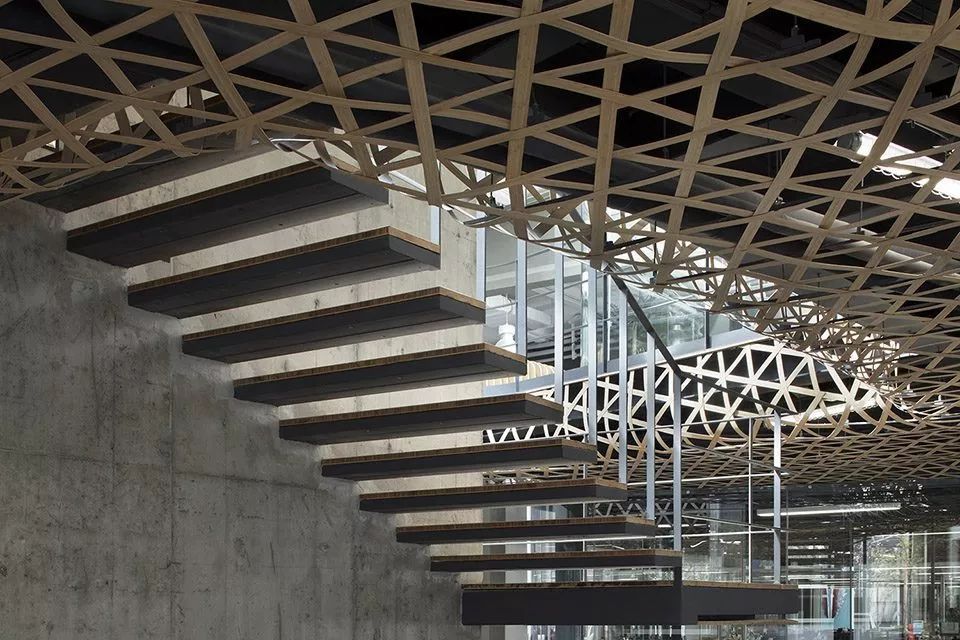
在一楼,设计师将传统的竹编工艺放大到空间结构建造之中。用网状竹编结构把管道、空调、灯具等全部包裹,并在设计的过程中对竹编结构的孔洞大小进行合理计算,在形成装置,丰满空间内“云”的质感的同时,又有效地减少了视觉压迫。材料通过楼梯向上延伸,在二楼以有序的不规则竹板排列护栏体现。在护栏内侧,延动线配置了长椅,面板均为竹材料的整压板材,利用原本留好的孔槽嵌入预制间距的区间,从而实现延曲线贴合的效果。整体在实现了保护安全、支撑依靠等功能性的同时,又增加了空间的丰富动感。
On the first floor, the designer profusely incorporated a traditional bamboo weaving technique to the structures available. Here, bamboo mesh covers pipes, air conditioners, lamps and many other objects. The designer calculated the scale of the gaps for every mesh, forming them graciously around equipment and installations, granting objects with the plump texture of “clouds”, and visually reducing spatial pressure. The material extends upwards through the stairs. On the second floor, irregular bamboo boards are orderly arranged against the guardrail. On the interior side, benches with boards made of pressed-bamboo are provided on predesigned slots that fit them perfectly, and grant the pathway a curved effect. This area not only provides protection and support to the user, but also increases spatial richness.
▼在一楼用网状竹编结构把管道、空调、灯具等全部包裹,bamboo mesh covers pipes, air conditioners, lamps and many other objects on the first floor
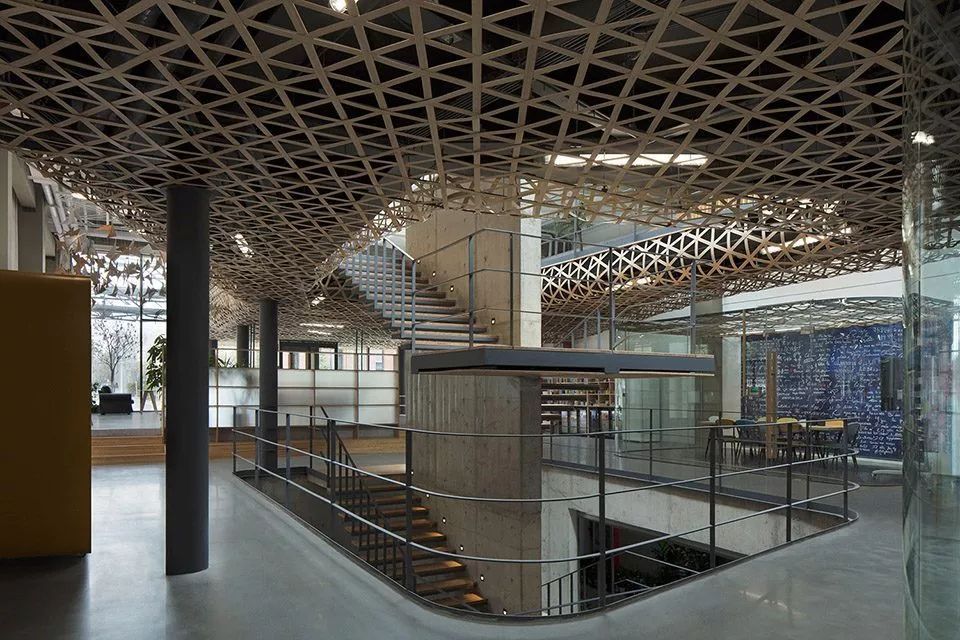
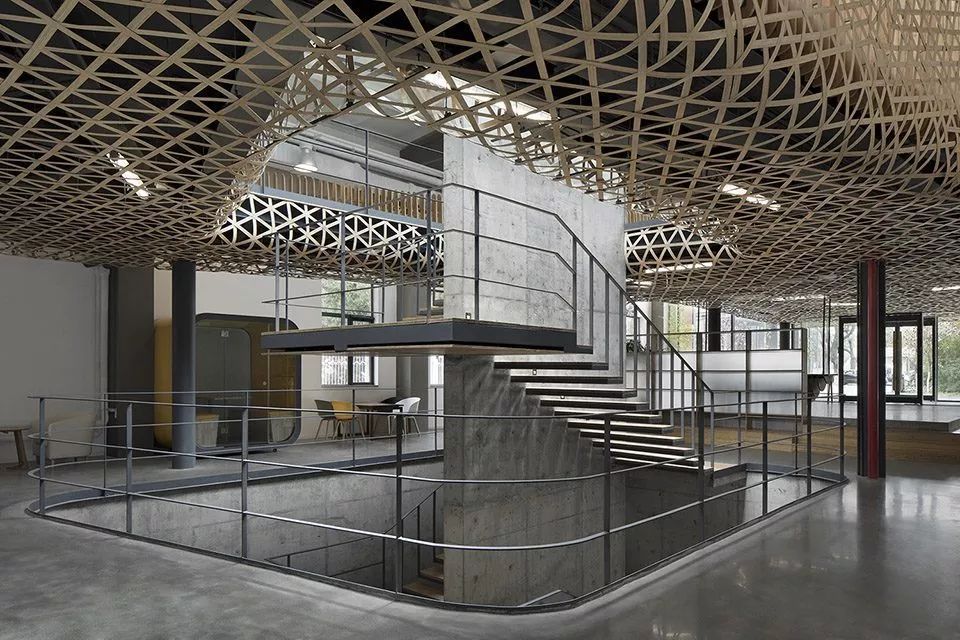
▼网状竹编结构细节,detail of the bamboo mesh
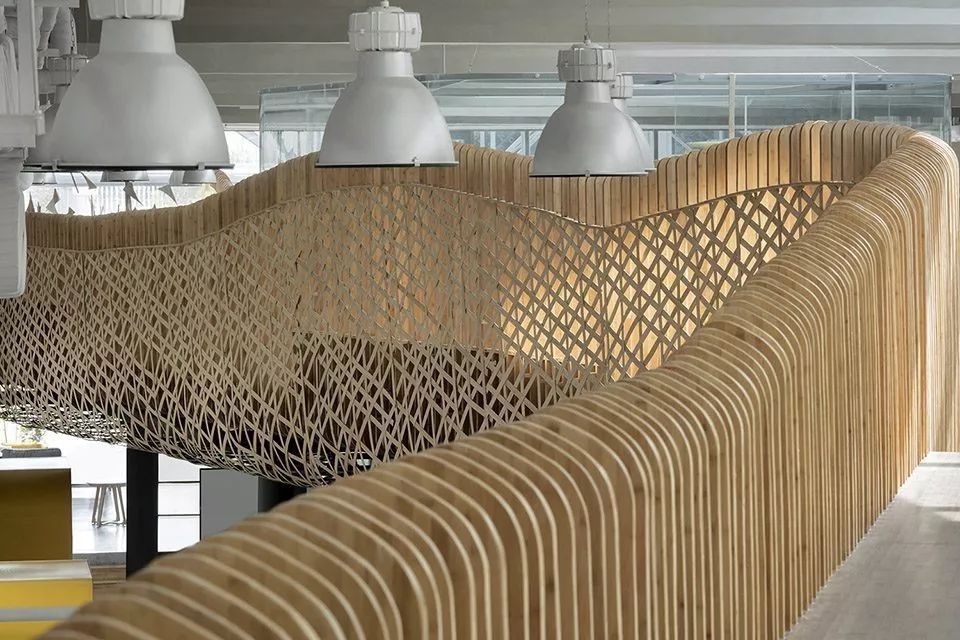
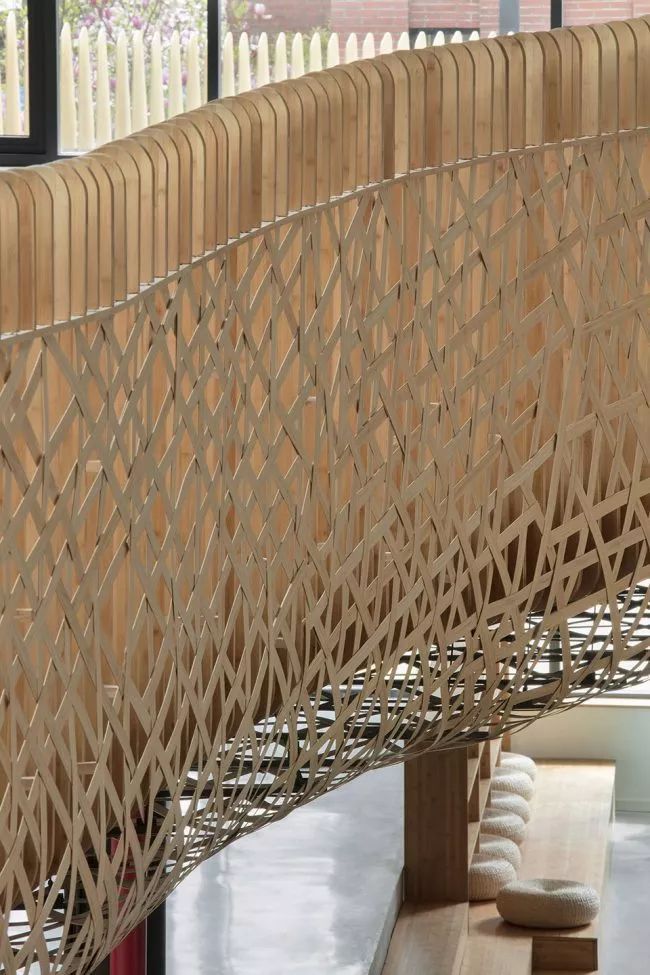
空间功能布局
马蜂窝二期项目依旧是南北出入。北侧规划为内部通道,设有车库,员工可以直接由此进入一楼、二楼的办公区域。主入口放在南侧,链接空间内的公共空间。由于挑高不足,在建筑的内容,特别是人集中办公生活的一楼、二楼,设计师尽量减少墙面隔断,以功能区进行内部场域协调。
Mafengwo’s Global Headquarters Phase II grants access from the north and the south. The north area is designed for internal use, has a garage, and employees can directly access their offices on the first and second floors. The main entrance is on the south side, a focal point that connects public spaces within the project. Due to the limitations on space, the internal areas of the building, especially on the first and second floors where a lot of people work together, avoid the use of wall partitions and are organized according to functional use.
▼建筑的内容尽量减少墙面隔断,avoid the use of wall partitions

接待区设立在南入口一楼大堂内,竹材质云状的悬浮前台以钢管“悬挂”在屋顶,与整体空间装饰呼应。背后的置物格挡自然地将空间的内外层次分开,以墙为界,形成了开敞的外部接待、休闲消费区。再往内,上下楼通道和会议室又形成了一个内部的公共区域,使办公区和外部再次得到缓冲。
The reception is located in the lobby of the first floor by the south entrance. A front desk covered in bamboo clouds “hangs” from steel pipes coming down from the ceiling, in a perfect match with the overall decoration. Arrays of shelves naturally separate inner and outer levels of space, with walls as their only boundary, they form an open reception and recreational area. Further inside, inter-leveled passages and meeting rooms form an internal public area, providing a buffer between the office area and the exterior.
▼一楼大堂云状的悬浮前台以钢管“悬挂”在屋顶,a front desk covered in bamboo clouds “hangs” from steel pipes coming down from the ceiling
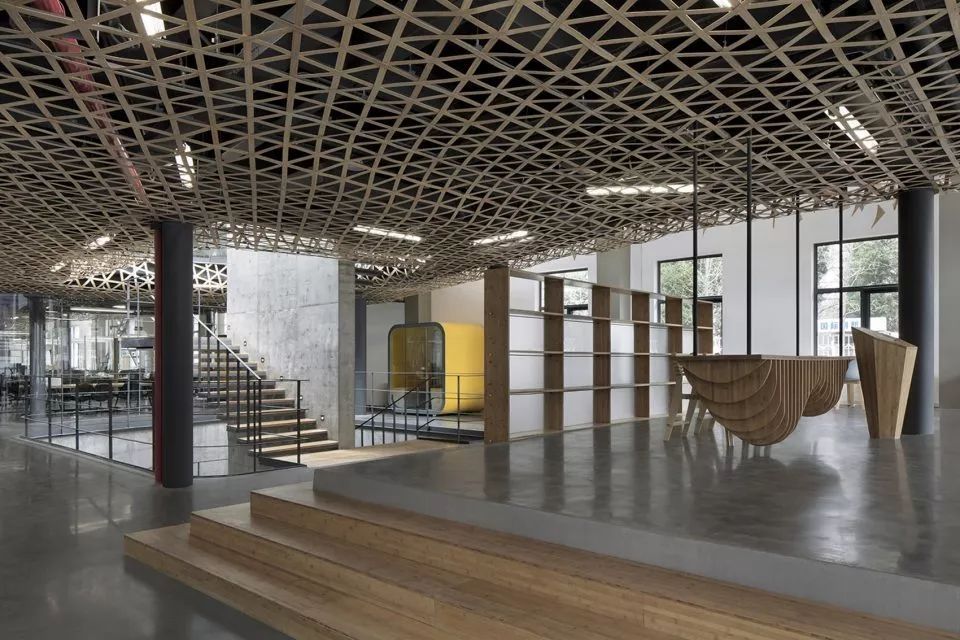
▼云状的悬浮前台细节,detail of the front desk
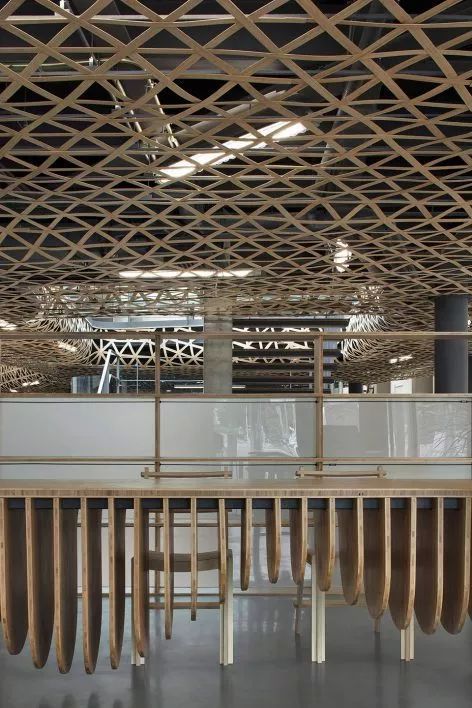
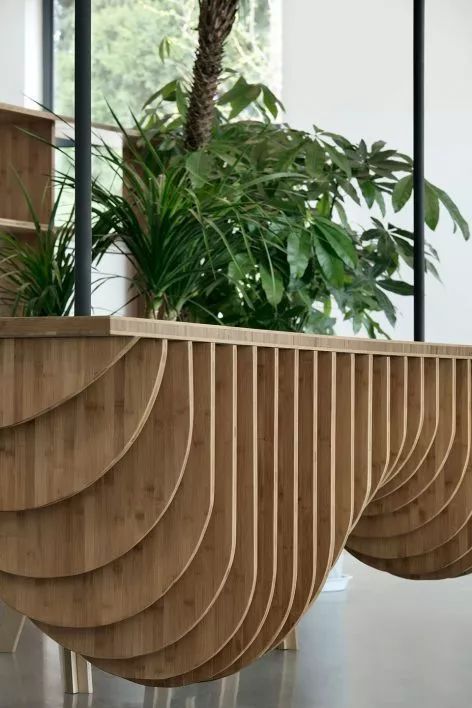
二楼整体划分基本相同,用人的动线创造功能区域的仪式感,使开放的空间,因为功能性,形成了自然的场域划分。主客之间,自由与秩序和谐共处。在会议室的处理上,设计师采用定制的弧形玻璃围合出多个岛状共享会议室,分布在“云”结构的上、下以及两侧的位置。小的可容纳六七个人,大的可容纳十几人开展头脑风暴。虽然实际面积都并不算宽敞,但透明全围合玻璃的选择圈定了区域,却打开了视线,消除了狭小空间的憋闷感。同时,也是对交流无碍、自由透明的又一种诠释。
The overall layout division on the second floor is basically the same, using transit areas to define functional spaces that also provide a sense of belonging, with naturally divided fields formed according to their functionality. Freedom and order coexist in harmony between the space and its occupants. The designer used customized curved glass separations to define conference rooms, creating multiple isle-like shared spaces, distributed in both levels and sides of the “cloud”. Small rooms accommodate up to six or seven individuals, while large ones allow brainstorms of up to a dozen people. Although the actual area is small, the choice of transparent enclosures defines the functional area, opens the line of sight and eliminates the depressive atmosphere of limited space. The concept further expresses unlimited communication, transparency and freedom.
▼采用定制的弧形玻璃围合出多个岛状共享会议室,using customized curved glass separations to define conference rooms
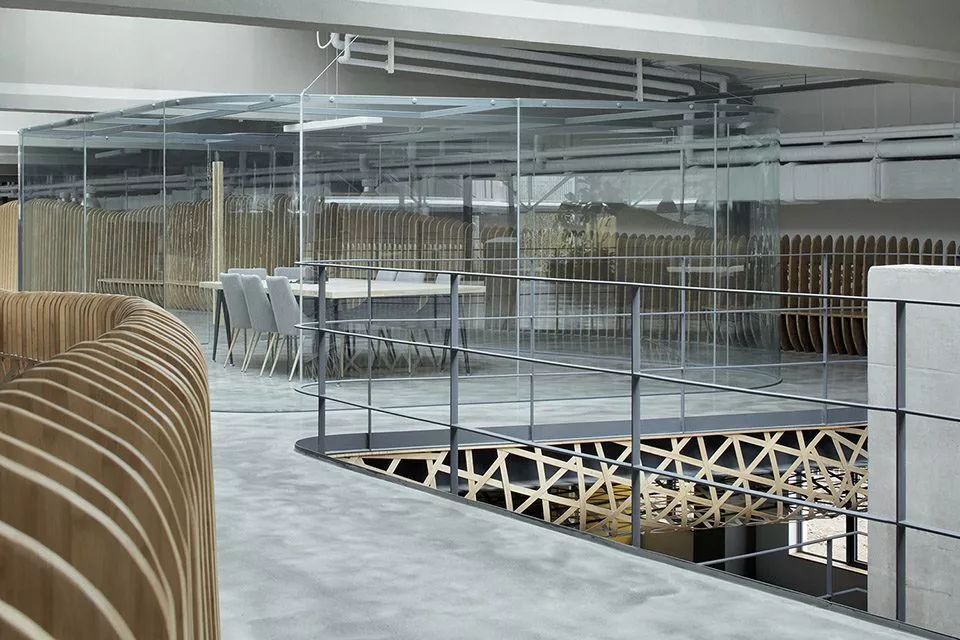
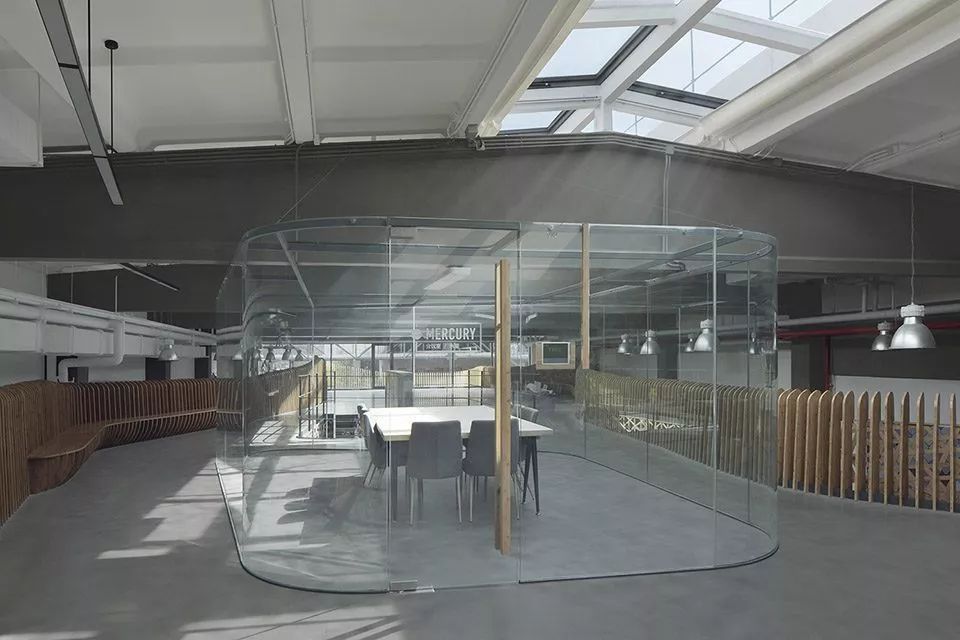
▼办公室四周的云结构,the “cloud”
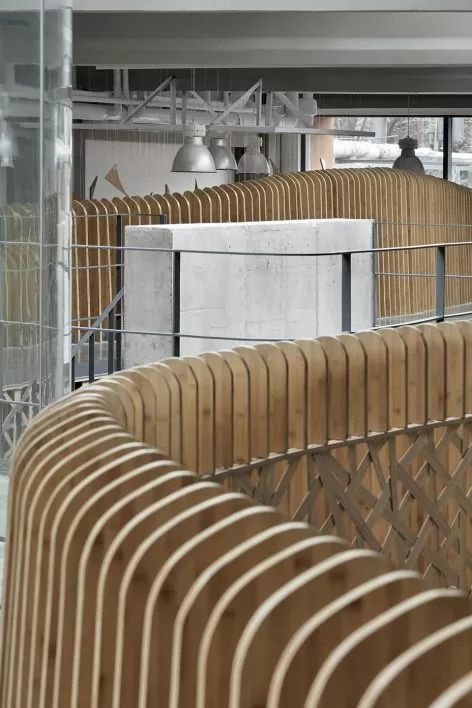
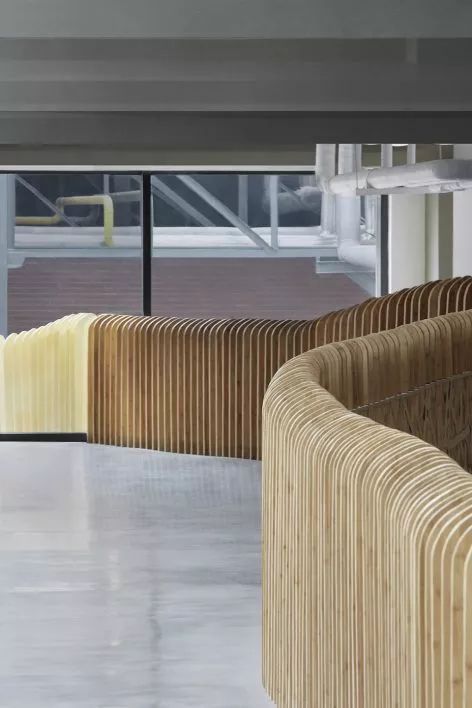
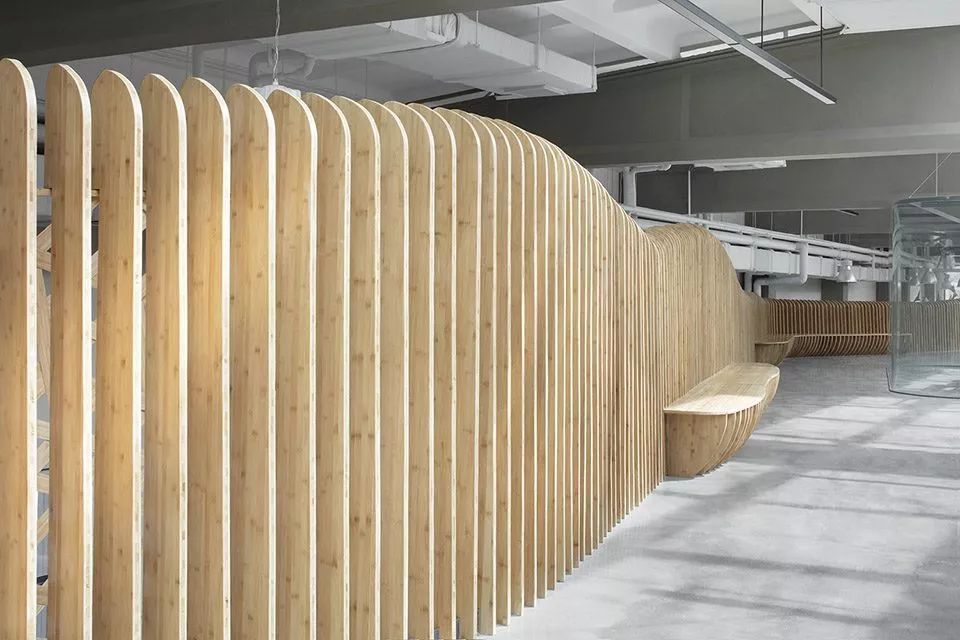
马蜂窝的企业文化中,最为看重对员工的尊重,本次设计在极有限的条件下还是给业主团队留下了创造与表现的空间。在打造期间,依据马蜂窝团队的想法,将马蜂窝的第一次大型品牌活动“攻略全世界网红墙”中,五面有代表性的网红墙搬入全新的办公室当中留作纪念。
Mafengwo’s corporate culture emphasizes respect for employees. Even with the limited conditions of the project, the designer delivered a creative and professional space. During the design process, this principle was applied to the first large-scale event organized by the brand “Introduction to the Global Wall of Fame”, and five representative walls of fame were placed into the office to be kept as a memento.
袈蓝建筑的设计师,再次以对业主的品牌理念与企业文化的充分理解,完成了这个具有挑战性的空间设计。从个性、自由,到大众、更自由,马蜂窝在让旅游更自由的路上不断创造新意,袈蓝建筑则在设计中用空间为品牌发声。
SYN Architecture has achieved, once again, a full understanding of the client’s brand philosophy and corporate culture, to complete a challenging spatial design. From an individual perspective of freedom, to a communitarian and wider perspective of freedom, Mafengwo dynamically brings new ideas to the industry, striving to deliver absolute freedom of travel, while SYN Architecture communicates the brand’s philosophy by delivering a uniquely crafted workspace.
▼夜景,night view
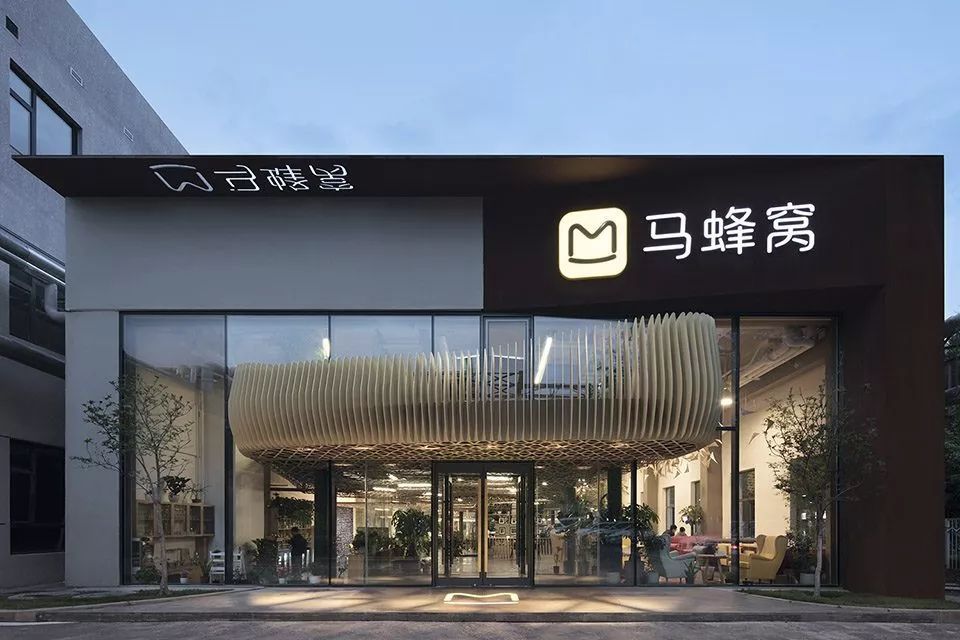
▼B1平面图,the basement floor plan

▼F1平面图,the first floor plan

▼F2平面图,the second floor plan

**项目信息
**
项目名称:蜂窝旅游网全球总部二期空间设计
主持建筑师:邹迎晞
项目公司:袈蓝建筑设计事务所
设计团队:建筑:费尔南多·韦拉斯凯兹·格拉西亚 室内:夏福强、曹真真、刘婷婷、冯妍 电气:吴从于 水、暖:衣超 结构:刘小虎
项目类型:室内设计与改造
占地面积:1126.7㎡
设计年代:2017年6月
建成年代:2018年2月
项目坐标:北京市朝阳区酒仙桥北路9号恒通国际创新园C15栋
建筑面积:2559.31㎡
项目状态:建成
施工方:华诚博远建筑工程有限公司
摄影师:夏至
项目材料及厂家
竹板:大庄竹材
TOTO卫浴 :TOTO(东陶机器株式会社)
办公家具:Open Make / 放制
声音系统:SONOS
Project name: Mafengwo Travel Network – Global Headquarters (Phase II) Design
Main architect: Zou Yingxi
Design company: SYN Architecture
Architectural design: Fernando Velázquez García
Interior design: Xia Fuqiang, Cao Zhenzhen, Liu Tingting, Feng Yan
Electrician: Wu Congyu
Water supply and heating: Yi Chao
Structures: Liu Xiaohu
Project type: Interior design and renovation
Area: 1126.7 ㎡
Design date: June 2017
Finish date: February 2018
Location: Building C15, Hengtong International Innovation Park, 9 Jiuxianqiao North Road, Chaoyang District, Beijing
Building area: 2559.31 ㎡
Project status: Completed
Construction company: Huacheng Boyuan Construction Engineering Co., Ltd.
Photographer: Xia Zhi
Project materials and manufacturers
Bamboo boards: Dazhuang Bamboo
TOTO bathroom: TOTO (Toto Machine Co., Ltd.)
Office furniture: Open Make / Fangzhi
Sound system: SONOS